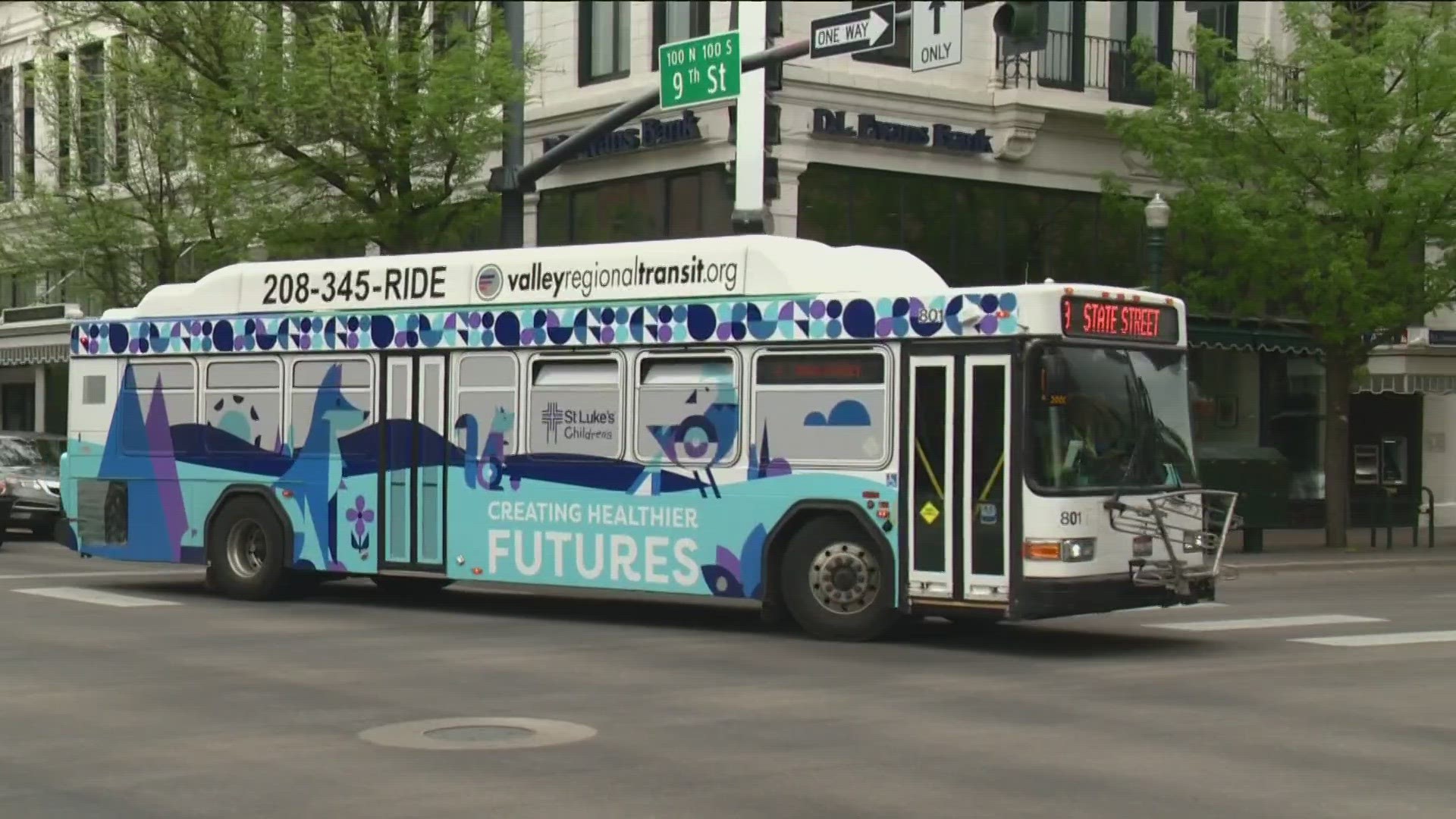BOISE, Idaho — The way Valley Regional Transit operates might look a lot different in a few months, thanks to its "Better Bus Routes" initiative.
"It's a tough economic time," CEO Elaine Clegg said. "Costs are up; fuel is up; wages are up."
To address those rising costs, VRT leadership is workshopping three different proposals. Although they differ, Clegg said all of the proposals would cut less popular routes and increase buses on more popular ones.
By increasing frequency, she said VRT would most likely add riders. Ridership has already grown substantially since COVID-19, with a 10% jump over 2021.
"We predict there will be an increase in ridership by six to 10%," Clegg said.
Even though they might cut various routes, mainly in southeast Boise, Clegg said the people who ride those buses would still have options.
There are other transportation alternatives, like small buses that work on demand or lift connections, that VRT already operates in Eagle and Canyon County.
Clegg said adjusting routes is never an easy decision, especially since VRT is trying to make public transportation more accessible. But often, accessibility and adequate funding go hand in hand.
Right now, she said VRT gets most of its funding through various cities and countries. Idaho's state government does not give VRT any money, unlike most other states.
VRT also does not have any taxing power. Clegg said getting the state involved is necessary to try and develop long-term solutions.
"We've had that conversation in the past; it didn't quite get over the hump," Clegg said. "I think this is the start of that, getting people talking about it, making people aware of the impact transportation can have on people's lives."
If VRT wants to maintain its number of service hours, Clegg said they need to ask partnering cities for more money. Two of the proposals reflect that possibility.
Not everyone is happy with the upcoming changes. Frequent bus rider Carsen Ibarra is against cutting routes, although he understands VRT's situation.
"If they want to cut some routes, I get it from an economic standpoint," he said. "But I don't agree with it."
Clegg hopes the community gets involved and provides feedback on the three proposals. Once they finalize the plans in July, they'll go to VRT's board in August for final approval.
Here are the three proposals:
Scenario A: Same budget, fewer service hours
This option would shift service from less-used routes to areas of higher demand, all within the current budget; due to cost increases, this scenario would also reduce service levels on select routes and frequency improvement to others.
Scenario B: Increased budget, same service hours, frequency focus
This option would shift service from less-used routes to areas of higher demand; with a budget increase, VRT could provide even more service to high-demand areas in this scenario.
Scenario C: Increased budget, same service hours, coverage focus.
This option would shift service from less-used routes to areas of higher demand; with a budget increase, VRT could provide on-demand service in areas impacted by the changes to provide a more flexible transit option.
People can get more information and give feedback online at rideVRT.org/redesign or email feedback@rideVRT.org.
There are also open houses and meetings people can attend.
5/25/23: Ada County Open House, 3-7 p.m. (location TBD)
5/30/23: Canyon County Open House, 3-7 p.m. at the Nampa Library
6/6/23: City of Boise budget hearing, 6 p.m.
Watch more Local News:
See the latest news from around the Treasure Valley and the Gem State in our YouTube playlist:

